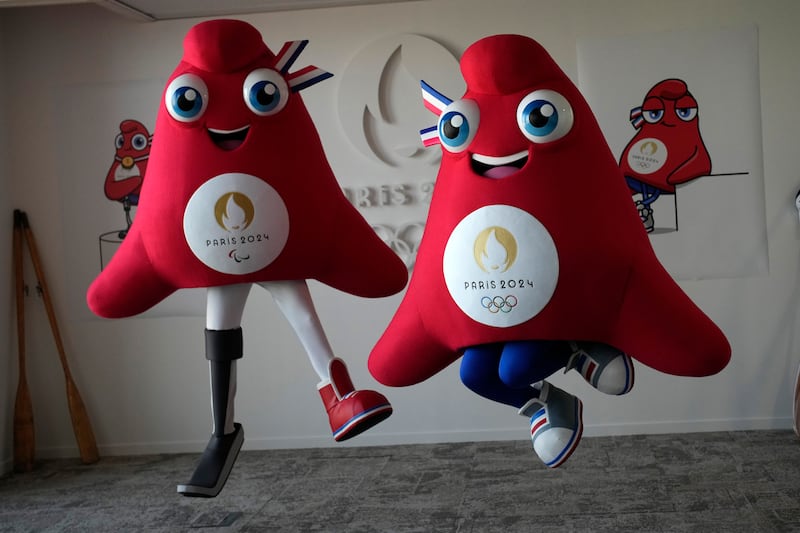Remember the trio of cartoonish critters that served as Olympic mascots for the 2002 Winter Games in Salt Lake City? There was Powder, the snowshoe hare; Copper, the coyote; and Coal, the black bear, all named for Utah’s natural resources.
Well, the organizers of the 2024 Summer Games in Paris went in a much different direction for their mascot.
The Parisians’ choice? A hat.
But not just any hat.
“La Phryge Olympique” — and “La Phryge Paralympique,” the mascot of the 2024 Paralympic Games in Paris — are what’s known as Phrygian caps, worn as a symbol of liberty during the French and even the American Revolutions and dating back to ancient Greece, when they were donned by freed slaves.
Typically red, the soft, pointy caps have been transformed into a pair of big-eyed creatures described on Twitter by Games organizers as “taking the lead of a tribe which always has its trainers on. What could be better than little Phrygian caps to lead the revolution through sport and accompany us to the #Paris2024 Games!”
The Phryges hats run and engage in various sports together in their introductory video thanks to legs — including a carbon fiber blade for the Paralympics mascot, who also at times uses a wheelchair. Salt Lake City’s 2002 Paralympics mascot was Otto, a sea otter, who seldom appeared alongside Powder, Copper and Coal.
Paris organizers expressed pride in coming up with an object, rather than an animal, to represent the French Games, The New York Times reported. The hat mascots were called “sporty, party-loving and so French,” the newspaper said.
This isn’t the first time Olympic organizers transformed a more abstract idea into a mascot, a key source of revenue from products that include stuffed toys along with clothing and almost anything else that can bear the image.
The 1996 Summer Games in Atlanta had what was often described as a blue blob, or worse, an “Olympic maggot,” for a mascot, named Whatizit, or Izzy for short. Organizers defended their choice, believed to be the first computer-generated Olympic mascot, as being aimed at children rather than more literal-minded adults.
Mascots, of course, are not chosen until a city has been named by the International Olympic Committee to host a Games. Salt Lake City and Sapporo, Japan, are currently vying to host the 2030 Winter Games. Like Salt Lake City, Sapporo has previously hosted a Winter Games, in 1972.
Sapporo’s mascot then? Takuchan, an Asian black bear that was actually considered an unofficial mascot since it was marketed by Seiko, the official timepiece of the Games, as well as by another sponsor, a bank. There’s no word on what Sapporo — or Salt Lake City — might be considering as a 2030 mascot.
For Salt Lake City, a mascot pick could be many years away. The Utah capital is also bidding for the 2034 Winter Games, the stated preference of the U.S. Olympic and Paralympic Committee due to concerns about the financial impact of America hosting again just 18 months after the 2028 Summer Games in Los Angeles.


